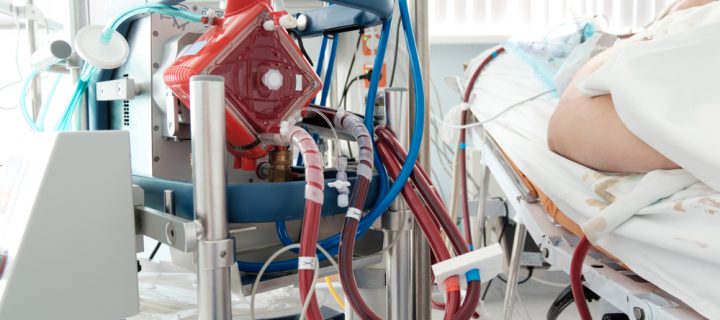ECMO has been around for decades and is now being used to help treat COVID-19 but it can be hard to come by.
New treatments are being developed to combat COVID-19 and one that’s gaining popularity for its efficacy is ECMO therapy. The treatment is being touted a “lifesaver”. Research shows it can cut your risk of dying from COVID-19 in half, it’s so effective.
What is ECMO and how does it work? Here’s a look.
What is ECMO?
Extracorporeal Membrane Oxygenation (ECMO) is a therapy that supports your heart and lungs that has been around since 1965. It was developed by Dr. Robert Bartlett and first used in heart surgery by someone named Dr. Gibbon. ECMO was more widely developed for use in pediatric patients like newborns. Later, it then spread as a therapy used to help adults.
How does it work?
Also known as extracorporeal life support, this technique pumps your blood out of your body and circulates it through a heart and lung machine. Tubes feed your blood out of your body, through the machine, and then back into you. This machine does the work of your heart and lungs, removing carbon dioxide from your blood and pumping it full of oxygen. The oxygenated blood is then rewarmed and circulated back into your body.
Related: 3 Best Exercises to Fight Off Incontinence
Basically, ECMO is used to give your heart and lungs a break if you fall severely sick and are unable to perform the gas exchange your heart and lungs usually do. The system allows your respiratory system to recover and regain its strength.
Why is ECMO used in patients with COVID-19?
Most people who catch the novel coronavirus recover. They might experience cold and flu systems, and may even develop long COVID, but they don’t require hospitalization in an intensive care unit. Some do, however. And for those with severe cases of COVID-19, ECMO can be a lifesaver.
Because the coronavirus targets your respiratory system, this can make it difficult for your heart and lungs to provide enough oxygen to the rest of your body. You can develop acute hypoxemic respiratory failure. Falling oxygen levels are a sure sign that a person needs immediate medical attention.
Patients who are admitted to the hospital with COVID-19 and low oxygen levels may receive oxygen through their nose. They may also receive noninvasive ventilation, mechanical ventilation and intubation, or ECMO. As described above, this can give your heart and lungs a much-needed break, giving them extra time to heal and providing you with a greater chance of recovering.
Striking reports of ECMO saving the lives of COVID-19 patients paint a picture of just how bad the situation can get. Some doctors have faced enormous pressure throughout the pandemic when trying to save lives. Some, like Dr. Jon Casey, a pulmonologist at Vanderbilt, have had to decide who can receive ECMO therapy and who can’t, at the cost of lives. Hospitals don’t have many sets of ECMO equipment on hand. Furthermore, the therapy requires a team of nurses, doctors, and respiratory therapists to tend to each patient who receives it. There hasn’t always been the machines nor the staff available to meet the needs of patients who are dying from COVID-19.
Casey told CNN that, at times, they were turning away three to four times as many patients as they could possibly accept, which was heartbreaking for his team. Lives were lost.
Going forward
While it’s easy to feel the pandemic is winding down, and that soon, our lives may return to “normal”, it’s important to remember the virus is still among us. Choose your social activities wisely. Wear a mask. Sanitize your hands and practice social distancing. Get vaccinated if you aren’t yet. COVID-19 can still be serious business.
photo credits: Kiryl Lis/Shutterstock.com












